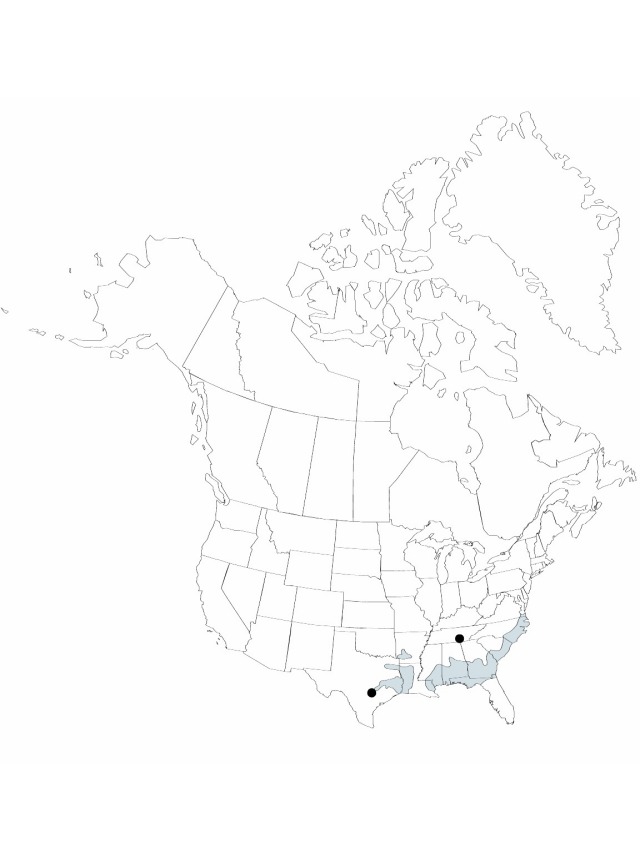Xyris laxifolia var. iridifolia
Novon 9: xxx. 1999.
Herbs, perennial, cespitose, 60–90 cm, base not bulbous. Stems compact. Leaves ascending or in narrow fans, 40–70 cm × 10–25 mm; sheaths strongly tinged with red, soft; blade deep shining green, broadly linear, flattened, plane, 10–25 mm wide, smooth. Inflorescences: scape sheaths exceeded by leaves; scapes terete, ancipital 2-edged, compressed distally to 3–4 mm wide, 1–2-ribbed distally, ribs smooth; spikes broadly ovoid to lanceoloid or cylindric, 20–35 mm; fertile bracts 6–7 mm, margins entire, apex rounded. Flowers: lateral sepals included, curved, 6–7 mm, keel scarious, lacerate or lacero-ciliate; petals unfolding in morning, blade obtriangular, 3 mm; staminodes bearded. Seeds mealy, oblong-fusiform, 0.7–0.9 (–1) mm. 2n = 18.
Phenology: Flowering summer–fall.
Habitat: Swamps, pond and lake shallows, shores, ditch banks, wet savanna, wet disturbed areas
Elevation: 0–300 m
Distribution

Ala., Ark., Fla., Ga., La., Miss., N.C., S.C., Tenn., Tex., Va., Mexico
Discussion
Xyris laxifolia is the tallest of the weedier species of Xyris, often sharing habitat with X. jupicai (with which it has often been confused taxonomically). It differs in having taller, wider foliage and scapes, in the leaf sheaths being reddened (rather than greenish or straw-colored), in the larger, longer, thicker, darker spikes, and in the longer, mealy (rather than translucent) seeds. Scape ribs in X. jupicai are papillate distally; while those of X. iridifolia are smooth.
The type variety, Xyris laxifolia Martius var. laxifolia, is a common wetland weed in large areas of Central America and South America, and it is distinguished primarily by its comparably large, acute (rather than blunt) spikes. The earliest name for the species is X. macrocephala Vahl, (Enum. Pl. 2: 204. 1805), but the type material at Copenhagen is a mix of two other species.
Selected References
None.
Lower Taxa
"thin" is not a number.